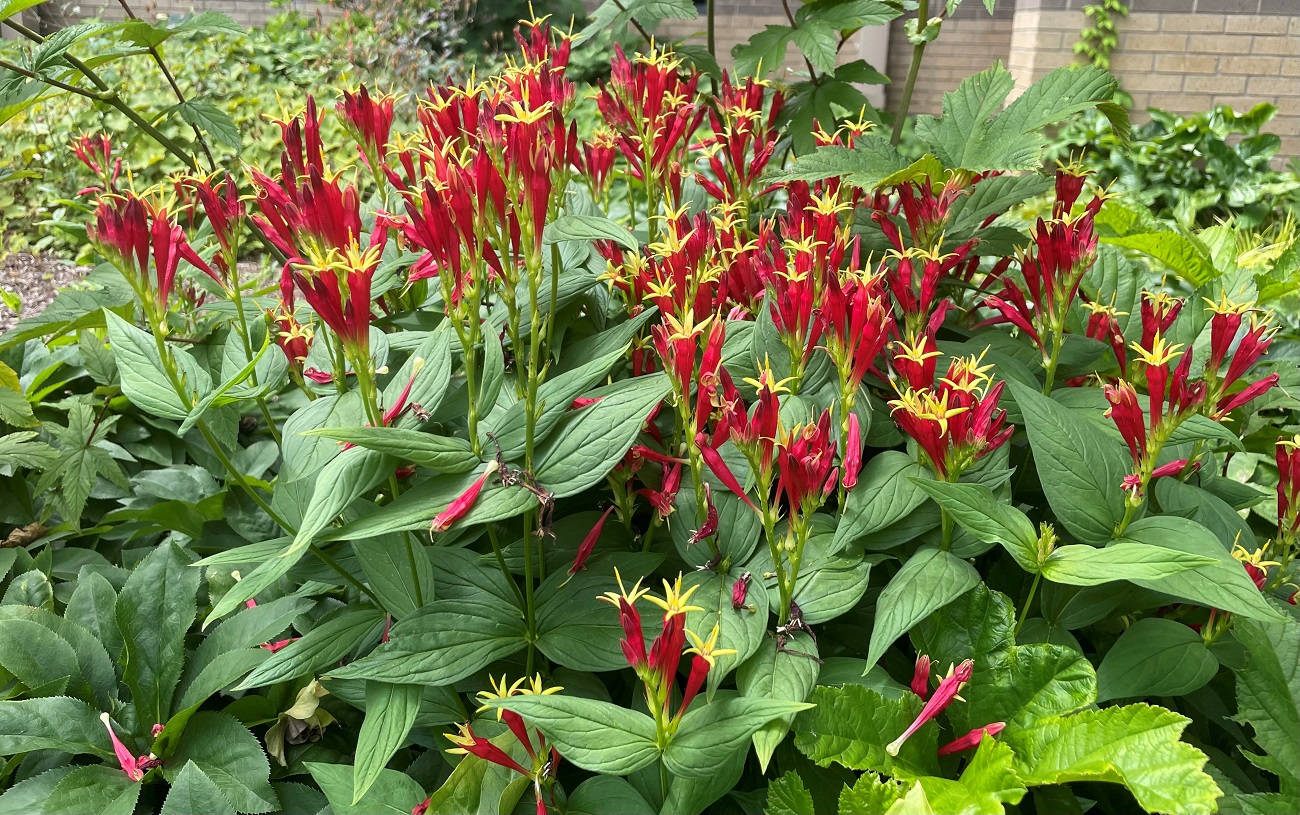
UT Gardens’ April Plant of the Month
Submitted by Holly Jones, horticulturist, UT Gardens, Knoxville
KNOXVILLE, Tenn. – Both Latin and common names for plants are often descriptive, offering clues about the way a plant grows, the color of the flowers or even the environmental conditions it prefers. And then there are names like Spigelia marilandica or woodland pink that have obscure connections to the plant they represent.
I can forgive the famous taxonomist Carl Linneaus for veering away from a logical naming practice. Anyone who names more than 12,000 plants over the course of their career should be allowed to name a few after exemplary people like he did with anatomy professor Adriaan van den Spiegel, who inspired the genus name Spigelia. But I find it hard to justify the choices made by his contemporary plant explorers who indulged their obsession with pinking shears to come up with the common name Woodland Pink for a plant with bright red tubular flowers that open at the top with yellow petals in the shape of a star with zero pink color to be found. Botanical forefathers, this plant deserved better!
Other common names include Indian pinkroot and worm grass, which both offer a mixed message reference to the medicinal properties found in its white colored roots. Native Americans, and later European settlers, used the root as an effective vermifuge to treat intestinal worms. While I prefer meaningful names to help me remember plants, I’m adding this one to my mental files under “shake my head,” and instead I will remember the plant for its many outstanding qualities in the garden.
Spigelia marilandica is native to a large chunk of the Eastern and Midwestern United States, where it grows in open woodlands and along streambanks and wetland edges. In the garden, this translates to adaptability to most growing conditions. For areas with high sun intensity, it is best to provide a bit of afternoon shade and additional moisture to prevent leaf burn. But otherwise, you can grow this well-behaved, long-lived perennial flowering plant in almost any situation.
Brilliant red flowers emerge atop handsome glossy green leaves on 18- to 24-inch-tall plants in early June, providing sweet nourishment for hummingbirds and butterflies through late July. Cut back plants by about a third after the first flush of blooms for sporadic reblooming up until the first frost.
There are multiple cultivars available on the retail market. ‘Little Redhead’ and ‘Ragin Cajun’ are both slightly more compact and floriferous than the straight species. The flowers on ‘Ragin Cajun’ are more of an orange red color. ‘Apple Slices’ and ‘Orange Slices’ are two brand new varieties from Proven Winners. A well-established specimen of the straight species can be found in the shade garden at UT Gardens, Knoxville. It is also planted at the UT Gardens, Jackson.
The UT Gardens includes plant collections located in Knoxville, Crossville and Jackson, Tennessee. Designated as the official botanical garden for the State of Tennessee, the UT Gardens are part of the UT Institute of Agriculture. The Gardens’ mission is to foster appreciation, education and stewardship of plants through garden displays, educational programs and research trials. The Gardens are open during all seasons and free to the public. For more information, see the Gardens website: utgardens.tennessee.edu.
The University of Tennessee Institute of Agriculture is comprised of the Herbert College of Agriculture, UT College of Veterinary Medicine, UT AgResearch and UT Extension. Through its land-grant mission of teaching, research and outreach, the Institute touches lives and provides Real. Life. Solutions. to Tennesseans and beyond. utia.tennessee.edu.